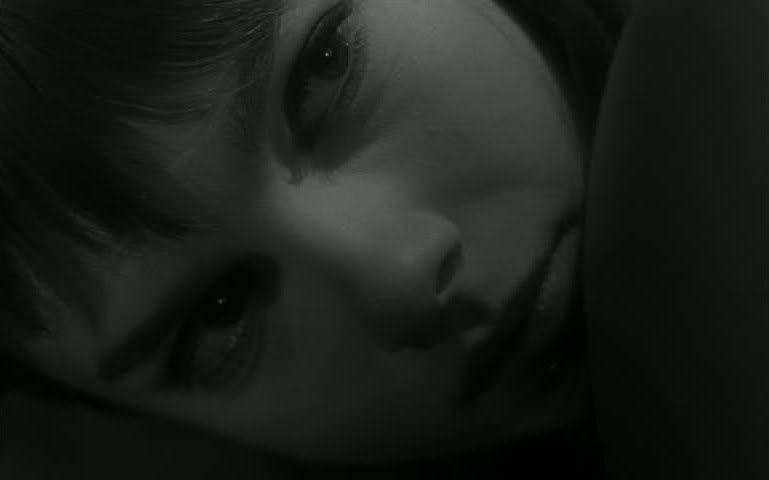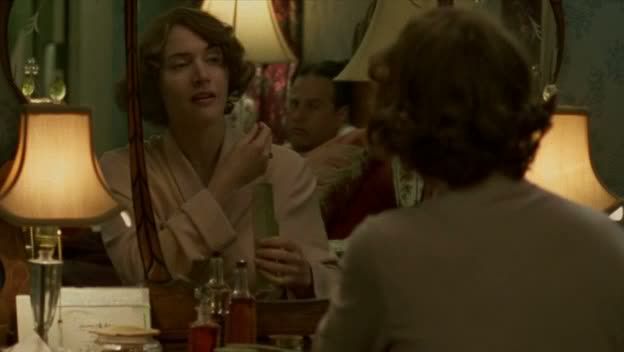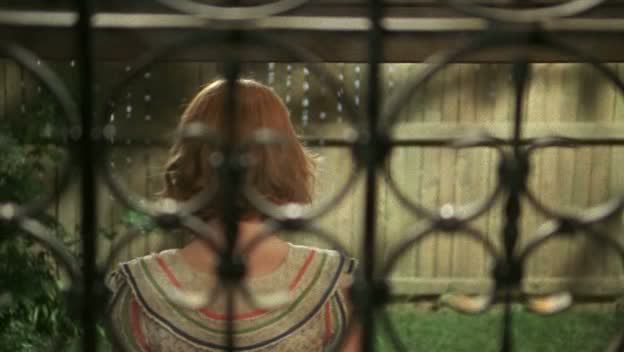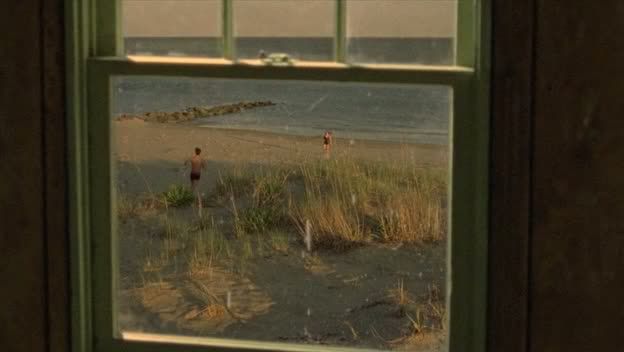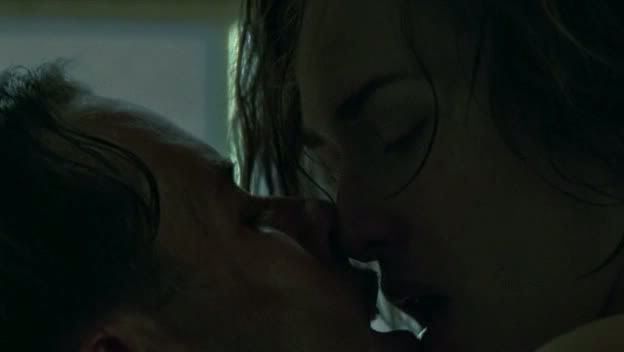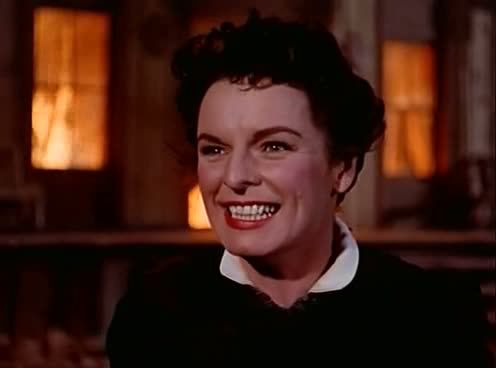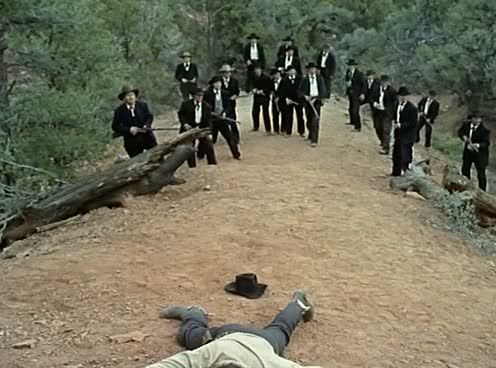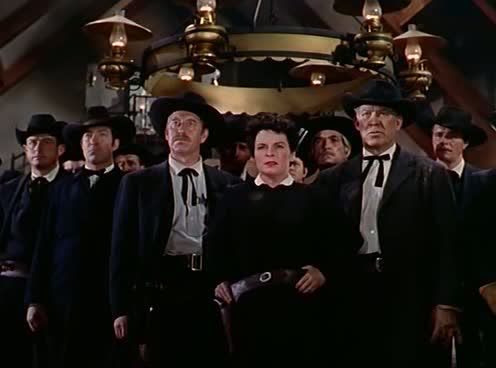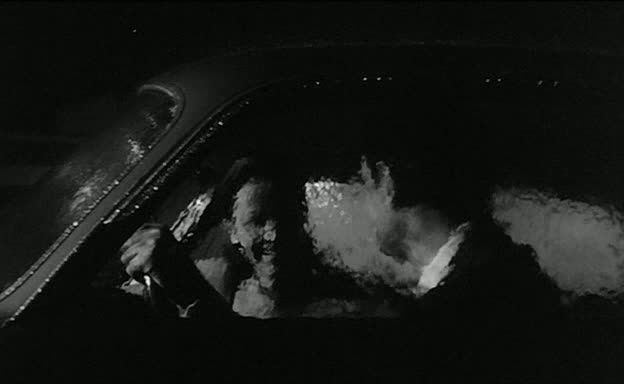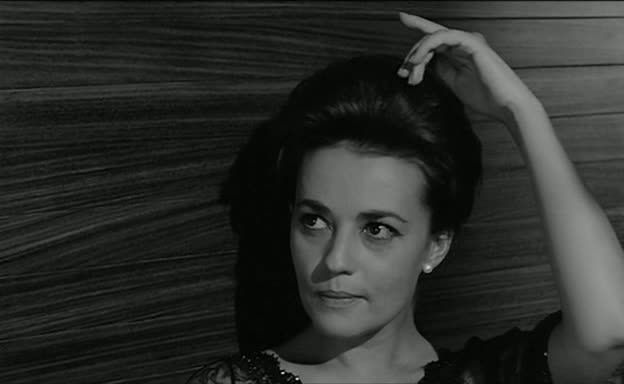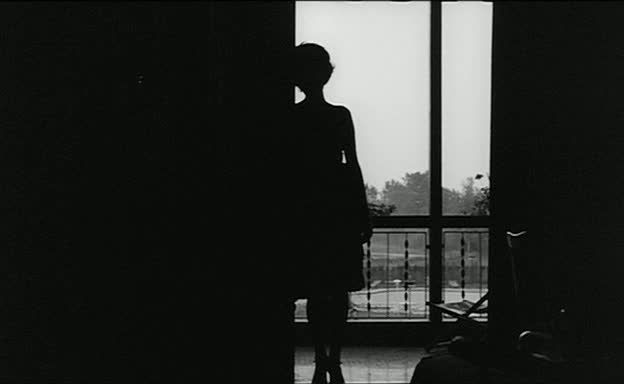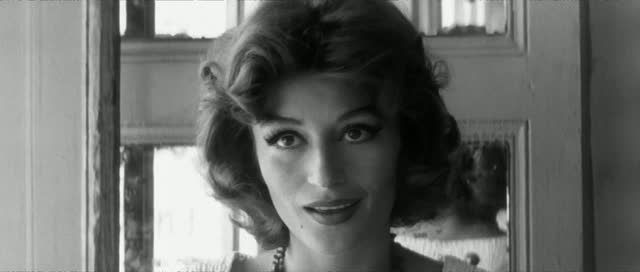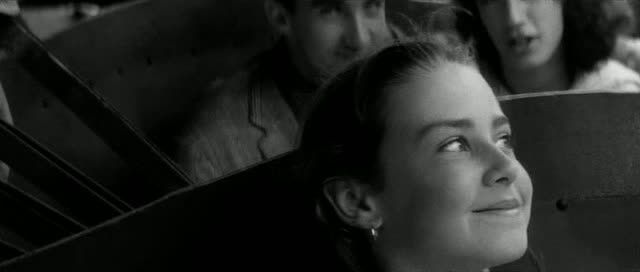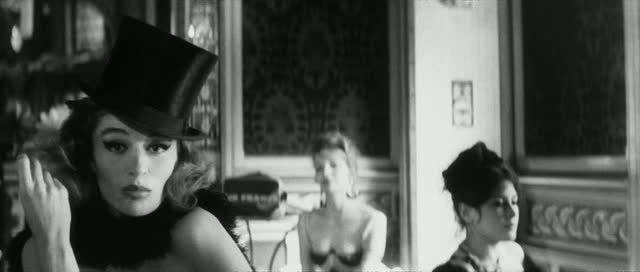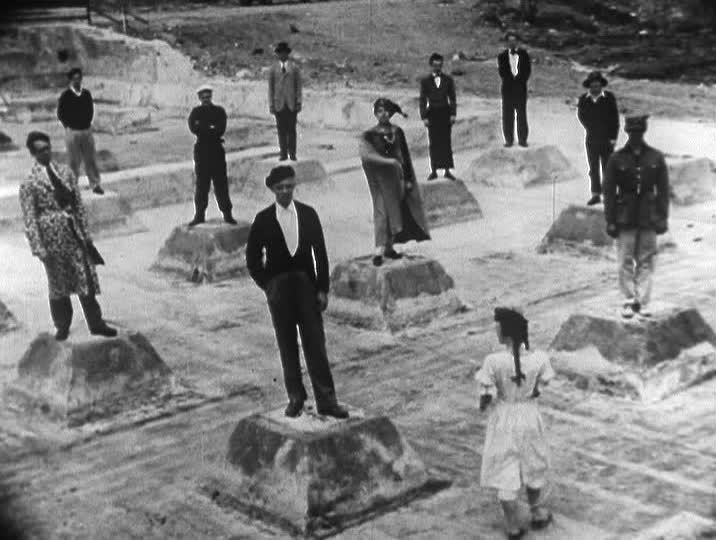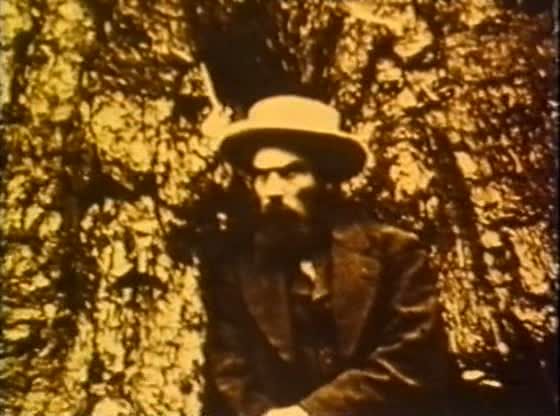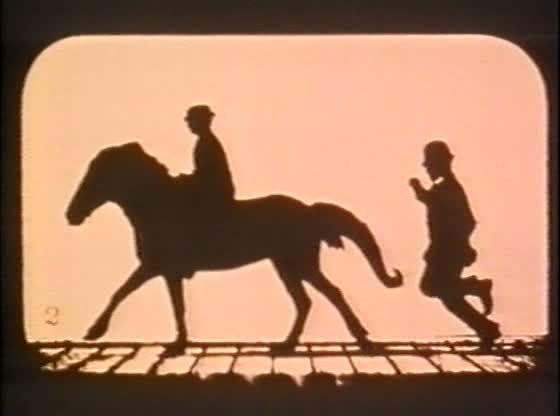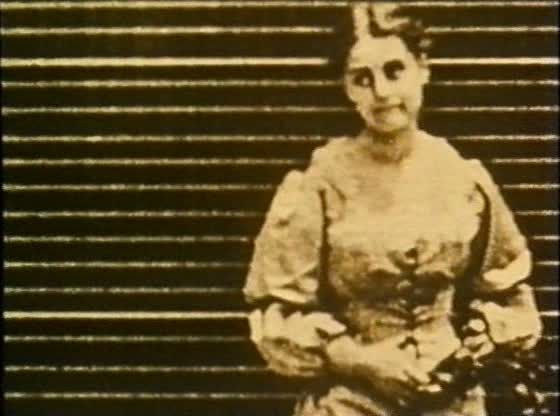
Nicolas Roeg's Don't Look Now is a chilling and mysterious film, a ghost story in which John Baxter (Donald Sutherland) and his wife Laura (Julie Christie) are haunted — literally or figuratively, it hardly matters — by the drowning death of their daughter Christine. Shaken by the tragedy, they close up their home and move to Venice, where John engages himself in his work as an expert on restoration, working on a crumbling church, while they attempt to put the memories behind them, to go on with their tragically changed lives. Instead, their grief and their fear are only intensified, magnified by the grotesque Gothic atmosphere of the city itself, with its shadowy mazes of corridors and its dark, dank waterways that hide the corpses of murder victims, as a killer stalks the city, dumping bodies into the canals to be dredged up as reminders of the watery grave the couple's daughter was lost to. If it seems like an almost absurdly bad idea to get over the drowning death of one's child by moving to a city in which water is omnipresent, the film very quickly makes it seem even worse, like a fatal mistake.
The city of Venice becomes a place of ancient, creeping terrors. John's work forces him to delve into the past, to restore the decayed artifacts of history to their former glory, which means that his work is a poignant metaphor for what he is utterly unable to do in his own life. Against the permanence of death is juxtaposed the work of restoration, of creating modern-day replicas to imitate the past. Several times, John repeats, like an angry mantra, that his daughter is dead, reinforcing the finality of it, the inability to reverse that event the way he's able to reverse the decay of a church's mosaics and statues by filling in the missing places with tiles fabricated to resemble those of the past. The past seems to taunt John: at one point, hoisting a gargoyle up onto the façade of the church, he comes face to face with the grotesque creature, its yawning mouth close to his face, as though poised to hungrily kiss him. He is uncomfortably intimate with the past, with its horrors and its ugliness, and this moment will reverberate in the film's startling ending, as though it was a premonition of John's eventual confrontation with the face of evil.
Laura deals with the tragedy in a different form, strangely comforted by the intervention of a blind psychic (Hilary Mason) and her sister (Clelia Matania). The psychic tells Laura that she sees Christine with them, that the little girl is sitting between her parents, still in the red raincoat she drowned in, happy and laughing as though nothing had happened. It's against this possibility — and the warnings and prophecies that the psychic says the little girl is delivering to her parents — that John offers his repeated and insistent reminders that their daughter is dead, that she is gone for good, that no messages or omens can come from beyond the grave. John, an engineer and a man of books, is rational and worldly, even though his work requires him to come into contact with the sublime and the spiritual on a daily basis. The grandeur of the churches, the sinister menace of the gargoyles, the fragmented images of spiritual scenes in various states of disrepair, these signifiers of the otherworldly do not touch John beyond the physical, tangible necessities of his work.
The strange atmosphere of this film is enhanced by Roeg's associative editing, which often brings together discrete places and actions with parallel editing rhythms. In the crisply edited opening minutes of the film, Roeg cuts back and forth between John and Laura inside and their two children, playing outside by the small pond in the lush green space around their country home. The editing connects parents and children, as a gesture begun by the daughter (throwing a ball) is completed by John as he throws a projector slide to Laura. The editing subtly injects a sense of creeping dread into the sequence, particularly in the visual rhymes between the daughter's bright red raincoat and the mysterious figure in red who John finds in one of his slides of an Italian cathedral. Roeg quietly calls attention to the subtle strangeness of this figure, even creating a split screen effect by placing the slide, projected on a screen, on the right side of the frame, with the black border of the screen separating the image from Laura, seen from behind, reading by the fire. A little later, when John spills water on the slide, the red runs, like blood tracing a curved path across the slide, spreading out across the image, which triggers John's abrupt certainty that something terrible is happening outside.

The inexplicable, slowly building sense of dread established in this opening sequence gradually seeps throughout the entire film; the menace seems to emanate from nowhere and everywhere, creating an un-centered feeling of terrible things lurking just below the surface. Something just seems off about everything, from John's employer, a bishop (Massimo Serato) who projects the aura of an Old World gangster, to the police investigator (Renato Scarpa) who John goes to see when he believes that his wife has gone missing, kidnapped by the psychic and her sister. The inspector listens to John's concerns with abstracted disinterest, absentmindedly doodling on a police sketch until the drawing resembles a monster — and looking out the window and actually seeing the sisters who John is trying to find. These kinds of weird scenes contribute to the sense that the film is just weird at its core, that there's something unsettling and horrible in the very air of the film, in the space between the characters, in the odd disjunctions of the editing. At one point, Roeg inserts a scene of the psychic and her sister in their room, cackling hysterically like a pair of witches, a scene that is otherwise completely unmotivated, which simply adds to the unresolved horror that Roeg is developing here.
That horror is interrupted by a very explicit and surprisingly tender love scene that suggests that the couple's grief may yet be healed, that the sense of approaching doom may yet dissipate. The sex scene is cut together with shots of the couple dressing afterward and getting ready to go out, the shots alternating quickly. A shot of sex, passionate and intense, then a shot of one of them putting on their clothes, or Laura putting on her makeup, smiling as she remembers their earlier romp: two different visions of domestic tranquility, blended together into a portrait of marital love in bed and out. Time becomes fluid, and through the magic of the editing these obviously separate activities are brought together as part of the same sequence. In a later scene, when Laura is with the psychic, who's trying to contact the couple's daughter, Roeg cuts together this scene with shots of John searching for his wife, and the cuts give the impression that the couple is looking at one another even though John never finds his wife. If the sex scene's editing suggests intimacy and domesticity, this scene suggests exactly the reverse, creating only the illusion of connection while the couple remains hopelessly separated, a prediction of the miscommunication and geographic dislocation that marks the second half of the film.
At times, the odd tone of the film even spills over from discomfort into offbeat comedy. When John walks into the police inspector's officer, Roeg films the large, mostly empty room from John's perspective, with the inspector behind his desk with a lamp positioned so that its shade seems to be taking the place of his head, until the man peeks around the corner and greets John. It's such a surprisingly playful image, particularly in light of the disconnected tone — as though the two men are talking past one another — of the subsequent scene. Roeg also builds some peripheral comic business around the employees of the hotel where the Baxters are staying. In one scene, John arrives back in the room to find a maid using the toilet in the room, then apologetically placing a magazine back in a stack by the door, shrugging as she walks by. There's also the hotel manager who's always chattering in Italian, sometimes seeming to make fun of the Baxters to his staff while remaining solicitous to their faces.
Such diversions in tone only contribute to the film's kaleidoscopic spiral into madness, which culminates in the frenzied editing of the creepy climax, in which memories and moments from throughout the film are collaged together in a way that suggests that answers are popping into place, even though in fact the mysteries all remain intact and are even deepened by the unpredictable conclusion. Roeg's film resists easy answers, fragmenting the narrative with the editing and allowing a languidly drifting sense of fear to wind through the film like the fog that churns underfoot during the climactic chase through Venice's back alleys. This eerie, haunting film never explains or resolves its many mysteries, leaving only an intangible horror that lingers long after the film is over.

